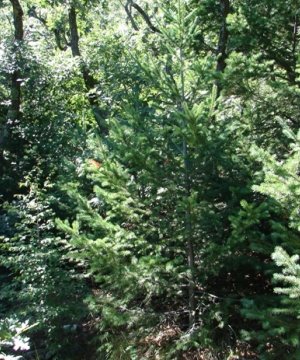
Limestone Mountain (North Aspect) 20-26" PZ
Scenario model
Current ecosystem state
Select a state
Management practices/drivers
Select a transition or restoration pathway
- Transition T1A More details
- Restoration pathway R2A More details
-
No transition or restoration pathway between the selected states has been described
Target ecosystem state
Select a state
State 1
High Frequency, Low to Mid Severity Fires State




Description
This state is a multi-aged mixed coniferous forest characterized by high frequency, low to mid severity fires. Abundant fine fuels exist with a combination of both warm and cool season grasses and forbs to carry fires. A high frequency of fire would favor ponderosa pine over Douglas-fir in this state (NPS 2005). A total of three seral stages are identified in this state and they most likely occur in a mosaic of patches optimizing wildlife habitat. Forest health is also optimized thereby limiting the extent of diseases.
Submodel
Description
This state is characterized low frequency, high severity fires. Overgrazing has been or is a part of this state and a very low grass cover exists. Dense thickets of coniferous exists due to the lack of periodic fires. Numerous young Douglas fir and Gambel oak trees exists in the understory of these thickets. The high density of Douglas fir in understory communities can likely shift the dominance from mixed ponderosa pine and southwestern white pine to Douglas fir (Sakulich and Taylor 2007). Large catastrophic wildfires can cause high tree mortalities in this state.
Submodel
Transition T1A


Mechanism
Due to overgrazing and fire suppression, the High Frequency Low to Mid Severity Fire State will transition into the Low Frequency, High Severity Fire State.
Model keys
Briefcase
Add ecological sites and Major Land Resource Areas to your briefcase by clicking on the briefcase (![]() ) icon wherever it occurs. Drag and drop items to reorder. Cookies are used to store briefcase items between browsing sessions. Because of this, the number of items that can be added to your briefcase is limited, and briefcase items added on one device and browser cannot be accessed from another device or browser. Users who do not wish to place cookies on their devices should not use the briefcase tool. Briefcase cookies serve no other purpose than described here and are deleted whenever browsing history is cleared.
) icon wherever it occurs. Drag and drop items to reorder. Cookies are used to store briefcase items between browsing sessions. Because of this, the number of items that can be added to your briefcase is limited, and briefcase items added on one device and browser cannot be accessed from another device or browser. Users who do not wish to place cookies on their devices should not use the briefcase tool. Briefcase cookies serve no other purpose than described here and are deleted whenever browsing history is cleared.
Ecological sites
Major Land Resource Areas
The Ecosystem Dynamics Interpretive Tool is an information system framework developed by the USDA-ARS Jornada Experimental Range, USDA Natural Resources Conservation Service, and New Mexico State University.
